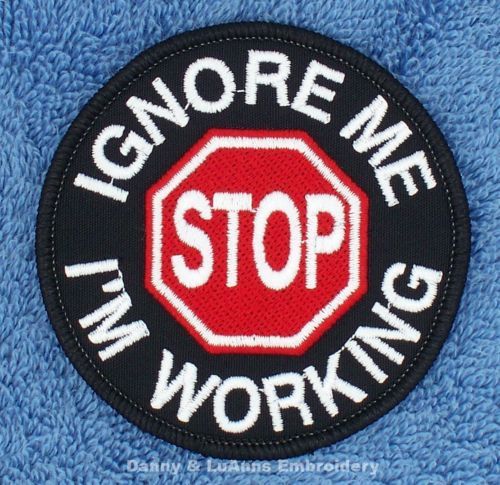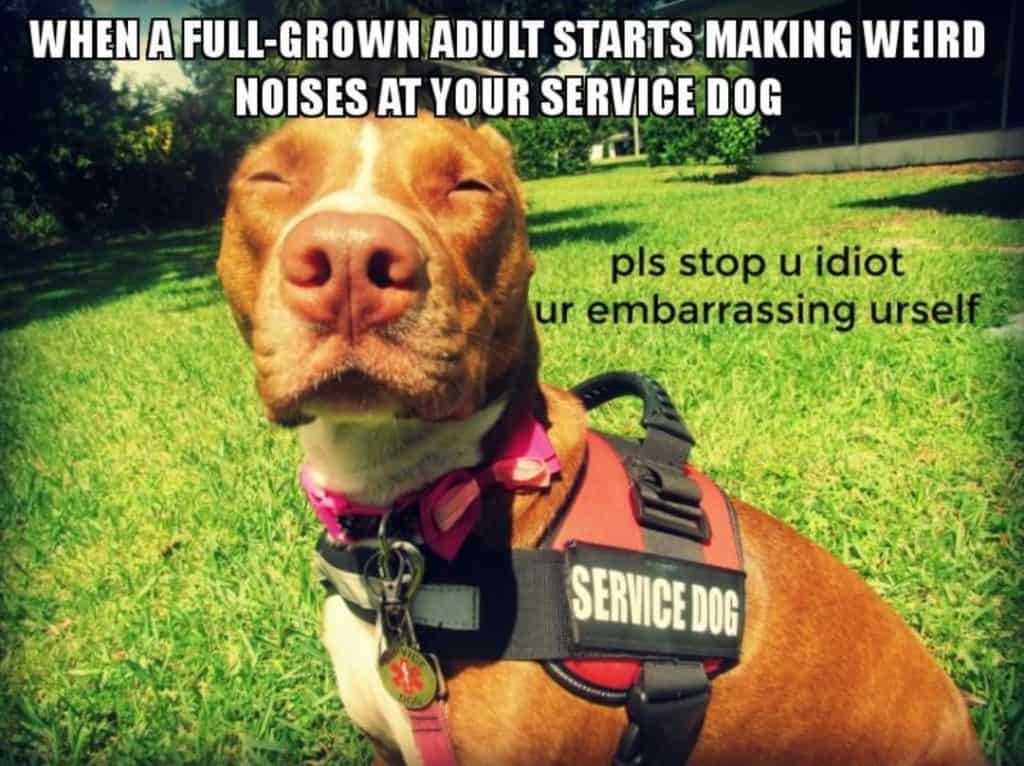
LEARN ABOUT WHAT IT IS TO BE THE FOCUS OF THE GENERAL PUBLIC. WHAT TO EXPECT, WHY YOUR RESPONSE & HOW YOU HANDLE INTERACTIONS IS IMPORTANT, AND WHETHER IT IS SOMETHING YOU THINK YOU WOULD BE ABLE TO COPE WITH.
What to Expect
It is impossible to truly understand or grasp just how strange an experience it can be to be out in public with your assistance dog. It is surreal sometimes, infuriating at others, and plain scary or upsetting at others. The key starting point is – you will be stared at. Your dog (and therefore you as well) stand out like a sore thumb in places like supermarkets, theatres etc. – places where pet dogs aren’t allowed. The way people look at you, you might think you have suddenly sprouted a second head, or that your dog is no longer a dog but actually a mythical being. People appear to lose their manners when it comes to staring when you have an assistance dog, they seem to think that it is perfectly acceptable; along with pointing, squealing, screaming and getting each other’s attention until you have a whole crowd watching your every move. And that’s just from a distance!
You will have people touching your dog, talking to your dog, coming very close to read their vest (even if it is perfectly clear from a distance) and even if they are aware your dog is an Assistance Dog, completely disregarding all sense of personal space for you or your dog. People appear to think it is acceptable to get in your dog’s face, touch them and pet them without asking (even if your vest says “do not pet”). Many also do not understand that where it says “do not distract”, that includes staring into your dog’s eyes, trying to get their attention, standing incredibly close to their face, calling them and clicking at them. You’ll hear a soundtrack of kissy noises, whistles, endless “awwwwwww”s, “look it’s a dog”, “doggyyyy!!!!” and even barking sounds wherever you go (and that’s just from the adults). Even the most composed adult can suddenly lose all sense of appropriate behaviour and become compelled to interact with your dog or express their love for your dog from various distances. After all, it is ESSENTIAL that you are made aware that you have a dog…in case you didn’t know already.

We haven’t even started on the way people interact with you as a person when you are an assistance dog handler. It is quite astounding – people seem to have a different standard of acceptable human interaction when you have an assistance dog. If you weren’t already feeling intruded upon by people interacting with your dog (after all an extension of yourself), you will encounter people stopping you when you are obviously busy or when they wouldn’t normally stop someone (e.g. at the doctors, hospital, grocery store etc.). People will not only stop you to comment on your dog, but many will ask why you have your dog, and say incredibly impolite things like “what’s wrong with you?”, “are you blind?”, “but you don’t look sick” etc. Of course, it is none of their business – but that doesn’t stop people feeling it very much is their business and demanding to know.
This is all ignoring the comments of “why is there a dog in here?”, “they can’t bring their dog in here”, “I wish I had an assistance dog”, “I wish I could bring my dog here”, “I’m going to bring my dog shopping too!” These can be insensitive, offensive, confusing and upsetting – however that leads us onto the next section: how to manage the attention (both positive and negative) we get from the public due to our assistance dog.
Managing the Public
Learning about the public’s reactions and how to deal with them if you still choose to get an assistance dog is a massively important step. Regardless of whether you want to be or not, you will be representing assistance dog handlers across the country as well as your supporting charity or the owner trained community. Many charity organisations have specific rules about how to handle the public, but for owner trainers it can be less clear/strict and yet almost more important (as you are more likely to feel pressured to prove your points/entitlement etc. when you don’t have the support of a specific charity).
People can be intrusive, abusive, vindictive, unaccepting, misinformed, lacking in education and you may be the first step to enlightening their knowledge. As frustrating as it can be, especially if you are not having a good day or you are symptomatic or anything, we need to do our best to not react in a knee-jerk manner. Rather, we need to consider that they don’t know better (even if they clearly should). We need to educate them, set boundaries clearly and calmly and make sure that the public know what to do/not to do for the next assistance dog team they encounter.
It is often a case of say the first thing you want to say (however many expletives and insults it might have) in your head, then come up with something calmer and more productive to actually say to the person. Tell them it isn’t a good time sorry, or that you’re sorry, you’re not actually up for talking right now. Sure, they may not deserve your apology as you are not obliged to talk to people, however for keeping things smooth and free from confrontation, it makes sense to sugar coat your responses where possible. Some people choose to silently point to patch on their vest that clearly states “DO NOT DISTRACT” or similar – this is a good option if you tend to go non-verbal in confrontational or stressful situations. If necessary (for your own sake and probably for theirs as well), walk away. Avoid sarcasm, rudeness, swearing and snapping where possible. Of course, sometimes this feels unavoidable especially when you feel unwell, on edge and/or targeted by these comments. But all we can do is our best to be polite, calm and give education where possible.
**relevant blog posts**
To get an idea of what it can be like, and what we Assistance Dog handlers want the public to do (and not do), we recommend you read the following blog posts on our site:
A Letter to the General Public
Guest Blog: I’m Working Sorry
10 Things We Hear from the Public

